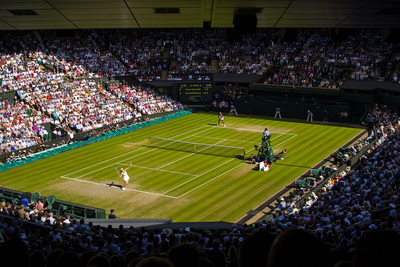
Wimbledon, or The Championships, Wimbledon to give it’s full title, is not only one of the richest tennis tournaments on the circuit, but also one of the most prestigious. The even makes up one of the four Grand Slams that run throughout the year and is regarded by many as one of the toughest, mainly because it’s played on grass.
The location is The All England Lawn Tennis and Croquet Club, Wimbledon, which is a borough of London, England. Many people associate the event as the start of the British summer time and often you see some amazing flowers and scenery on show.
The best players on the planet will descend upon SW19 for the fortnight in July, but who will be crowned as the champions?
- In This Article:
- About
- Qualification
- Courts
- Prize Money
- Statistics
- History
Wimbledon Recent Winners
| Year | Men's Winner | Men's Runner-Up | Women's Winner | Women's Runner-Up |
|---|---|---|---|---|
| 2023 | Carlos Alcaraz | Novak Djokovic | Marketa Vondrousova | Ons Jabeur |
| 2022 | Novak Djokovic | Nick Kyrgios | Elena Rybakina | Ons Jabeur |
| 2021 | Novak Djokovic | Matteo Berrettini | Ashleigh Barty | Karolina Pliskova |
| 2020 | Cancelled | Cancelled | Cancelled | Cancelled |
| 2019 | Novak Djokovic | Roger Federer | Simona Halep | Serena Williams |
| 2018 | Novak Djokovic | Kevin Anderson | Angelique Kerber | Serena Williams |
| 2017 | Roger Federer | Marin Cilic | Garbine Muguruza | Venus Williams |
| 2016 | Andy Murray | Milos Raonic | Serena Williams | Angelique Kerber |
| 2015 | Novak Djokovic | Roger Federer | Serena Williams | Garbine Muguruza |
| 2014 | Novak Djokovic | Roger Federer | Petra Kvitova | Eugenie Bouchard |
| 2013 | Andy Murray | Novak Djokovic | Marion Bartoli | Sabine Lisicki |
| 2012 | Roger Federer | Andy Murray | Serena Williams | Agnieszka Radwanska |
| 2011 | Novak Djokovic | Rafael Nadal | Petra Kvitova | Maria Sharapova |
| 2010 | Rafael Nadal | Tomas Berdych | Serena Williams | Vera Zvonareva |
| 2009 | Roger Feder | Andy Roddick | Serena Williams | Venus Williams |
| 2008 | Rafael Nadal | Roger Federer | Venus Williams | Serena Williams |
| 2007 | Roger Federer | Rafael Nadal | Venus Williams | Marion Bartoli |
| 2006 | Roger Federer | Rafael Nadal | Amelie Mauresmo | Justine Henin |
| 2005 | Roger Federer | Andy Roddick | Venus Williams | Lindsay Davenport |
| 2004 | Roger Federer | Andy Roddick | Maria Sharapova | Serena Williams |
About Wimbledon
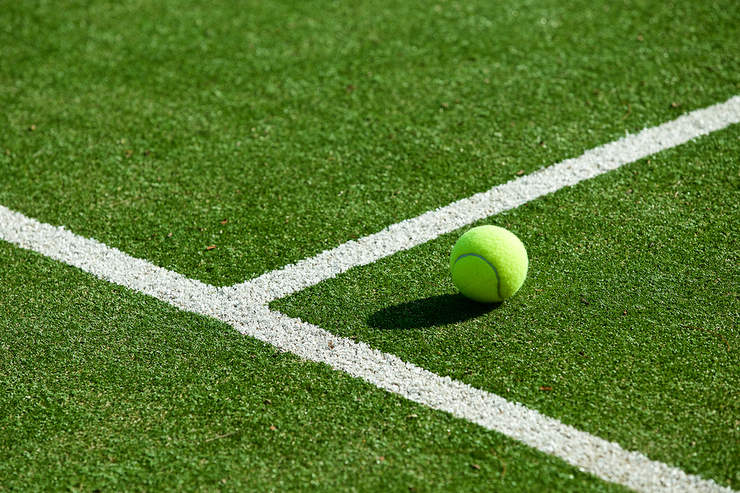
Whilst many people refer to Wimbledon as simply, ‘Wimbledon’, it’s official name is actually The Championships, Wimbledon. It was brought in as this to prevent any confusion between reference of the town and the tournament proper.
The two major championships that run within the 2-week event comes in the form of the men’s and women’s singles titles. Like all major titles, these are often thought of as being the highest anticipated and the ones that most spectators want to see.
But, there is much more to the event that simply these two competitions. It also includes men’s and women’s doubles, mixed doubles and several junior and wheelchair tournaments as well. Over the last decade or so the hosts have put huge emphasis on making these other events more popular, scheduling the matches to play on the show courts and increasing the TV coverage that they get.
Conditions
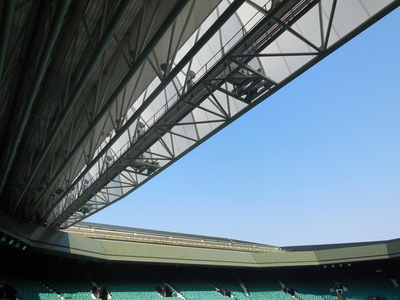
Even though the Championships are technically within the British Summer time, the weather is often less than kind. It’s highly unusual for games not to get called off for rain at some point and it’s actually become so common that people see it as part of the game now, utilising these breaks to either start again if behind or maintain if ahead.
To combat the weather Centre Court and the Number 1 Court both have a retractable roofs, meaning play can continue no matter what the weather. The roofs are made of a translucent fabric which allows for natural light to flood the courts during the day. Artificial floodlights can be used when needed if play extends into the evening. Centre Court’s roof was used from the 2009 tournament as part of a major revamp, whilst the roof on Court No 1 opened in May 2019 in time for the tournament in July.
Qualification, Seeding & Draw
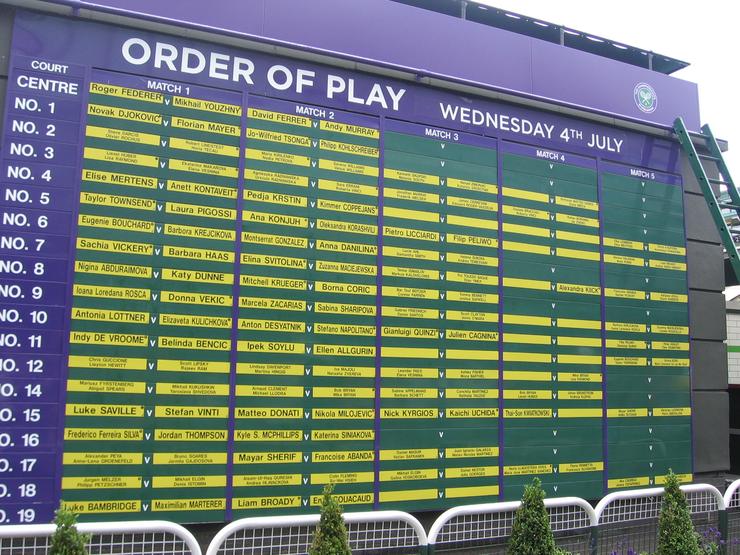
For each tournament, 128 players will take place in both the men’s and women’s singles events. There are a number of ways in which players are able to get access. The easiest way is simply to be seeded, with each variation there are 32 players who are seeded. These essentially not only get automatic qualification, but as the draw is made, they are also kept apart from each other, theoretically giving them an easier opening game.
Originally players were seeded based on each country nominating up to 4 players to represent that country. But, this was scraped in 1927 and started to seed players based on past performances and current ranking.
The top 32 players in the world the week before Wimbledon starts will be the top 32 seeds. But, world ranking won’t necessarily reflect the rankings for the seed. They committee take into account previous years performances on that surface. So, as there are very few grass tournaments throughout the year, Wimbledon is actually one of the majors that sticks pretty closely to world rankings.
Wildcards
The Committee of Management play a big role in who plays at the event. One of their key decisions come from the wildcards that are allocated to each tournament. A wildcard can be allocated to any player who has not already qualified for the tournament. Generally, the committee will favour home-grown talent, but it’s by no means exclusive to this. Goran Ivanisevic is the only wildcard player to have ever won either a men’s or women’s singles title at Wimbledon.
Wimbledon Men’s Singles Wildcards 2019-2023
| 2023 | 2022 | 2021 | 2019 |
|---|---|---|---|
| Liam Broady (GBR) | Zizou Bergs (BEL) | Carlos Alcarez (ESP) | Marcos Baghdatis (CYP) |
| Jan Choinski (GBR) | Liam Broady (GBR) | Alex Bolt (AUS) | Jay Clarke (GBR) |
| Arthur Fery (GBR) | Jay Clarke (GBR) | Liam Broady (GBR) | Paul Jubb (GBR) |
| Arthur Fils (FRA) | Alastair Gray (GBR) | Jay Clarke (GBR) | Dominik Koepfer (DEU) |
| David Goffin (BEL) | Paul Jubb (GBR) | Jack Draper (GBR) | Feliciano Lopez (ESP) |
| George Loffhagen (GBR) | Ryan Peniston (GBR) | Andy Murray (GBR) | James Ward (GBR) |
| Sebastian Ofner (AUS) | Tim van Rijthoven (NED) | ||
| Ryan Peniston (GBR) | Stan Wawrinka (SUI) |
Wimbledon Women’s Singles Wildcards 2019-2023
| 2023 | 2022 | 2021 | 2019 |
|---|---|---|---|
| Katie Boulter (GBR) | Katie Boulter (GBR) | Katie Boulter (GBR) | Harriet Dart (GBR) |
| Jodie Burrage (GBR) | Jodie Burrage (GBR) | Jodie Burrage (GBR) | Monica Niculescu (ROU) |
| Harriet Dart (GBR) | Sonay Kartal (GBR) | Harriet Dart (GBR) | Katie Swan (GBR) |
| Sonay Kartal (GBR) | Yuriko Miyazaki (GBR) | Francesca Jones (GBR) | |
| Elina Svitolina (UKR) | Daria Saville (AUS) | S. Murray Sharan (GBR) | |
| Katie Swan (GBR) | Katie Swan (GBR) | Emma Raducanu (GBR) | |
| Heather Watson (GBR) | Serena Williams (USA) | L. Samsonova (RUS) | |
| Venus Williams (USA) |
Qualifying Tournament
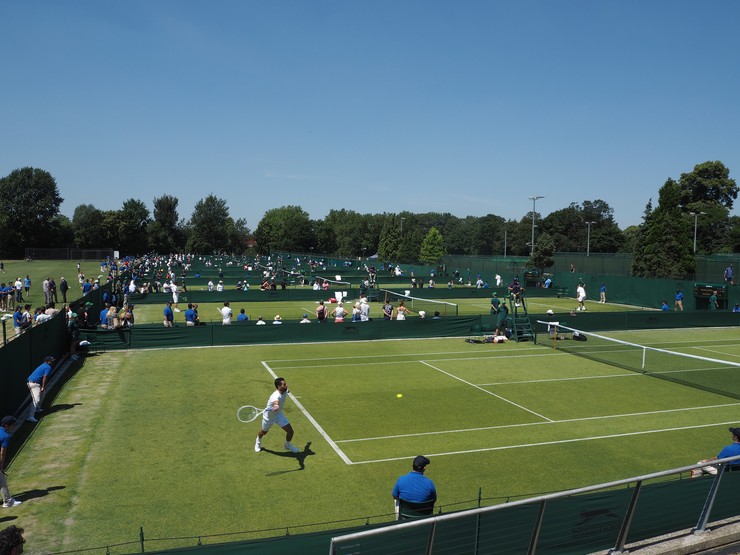
Outside of being seeded, ranked or given a wildcard spot, the only other chance of gaining entry to Wimbledon is via one of the qualifying competitors. Each event will include three-round tournaments. Pre-qualifying tournaments take place all over the world with final qualifying held at the England Sports Centre in London shortly prior to the main Championship start.
Lead-Up Events
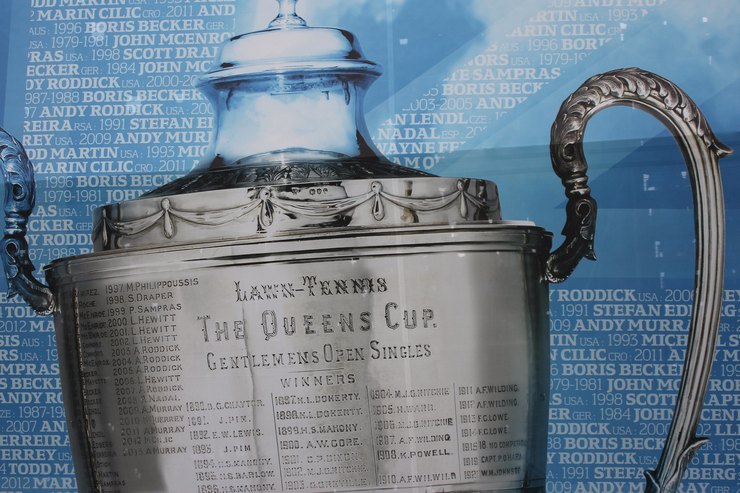
Ranking events are held throughout the year, but one of the last chances to gain points on grass before Wimbledon for the men is by playing at the Queen’s Club tournament, starting two weeks prior to Wimbledon. It’s a tough place to play though as many players use this tournament as a warm up for the main event, often resulting in a star-studded field.
Another major lead up event for men on grass comes in the form of the Halle Open which is held alongside Queens in Germany. This was Roger Federer’s preferred Wimbledon warm up, it’s a tournament that he won ten times between 2003 and 2019.
In the week prior to Wimbledon, the Eastbourne tournament is also held. Though many top players take part, especially when trying to regain fitness, the proximity to Wimbledon itself means many of the highest ranked players will not normally play here.
Queen’s, Halle & Eastbourne Winners: 2014 – 2023
| Year | Queen’s Club | Halle Open | Eastbourne |
|---|---|---|---|
| 2023 | Carlos Alcaraz | Alexander Bublik | Francisco Cerundolo |
| 2022 | Matteo Berrettini | Hubert Hurkacz | Taylor Fritz |
| 2021 | Matteo Berrettini | Ugo Humbert | Alex de Minaur |
| 2020 | Cancelled | Cancelled | Cancelled |
| 2019 | Feliciano Lopez | Roger Federer | Taylor Fritz |
| 2018 | Marin Cilic | Borna Coric | Mischa Zverev |
| 2017 | Feliciano Lopez | Roger Federer | Novak Djokovic |
| 2016 | Andy Murray | Florian Mayer | No tournamnet |
| 2015 | Andy Murray | Roger Federer | No tournament |
| 2014 | Grigor Dimitrov | Roger Federer | Richard Gasquet |
The two main women’s grass court lead up events are both held in England in the fortnight prior to Wimbledon with the Birmingham tournament followed by Eastbourne. A grass court competition in Nottingham also serves as a warm up to Wimbledon.
Nottingham, Birmingham & Eastbourne Winners: 2014 – 2023
| Year | Nottingham | Birmingham | Eastbourne |
|---|---|---|---|
| 2023 | Katie Boulter | Jeļena Ostapenko | Madison Keys |
| 2022 | Beatriz Haddad Maia | Beatriz Haddad Maia | Petra Kvitova |
| 2021 | Johanna Konta | Ons Jabeur | Jelena Ostapenko |
| 2020 | Cancelled | Cancelled | Cancelled |
| 2019 | Caroline Garcia | Ashleigh Barty | Karolina Pliskova |
| 2018 | Ashleigh Barty | Petra Kvitova | Caroline Wozniacki |
| 2017 | Donna Vekic | Petra Kvitova | Karolina Pliskova |
| 2016 | Karolina Pliskova | Madison Keys | Dominika Cibulkova |
| 2015 | Ana Konjuh | Angelique Kerber | Belinda Bencic |
| 2014 | Jarmila Gajdosova | Ana Ivanovic | Madison Keys |
The Courts
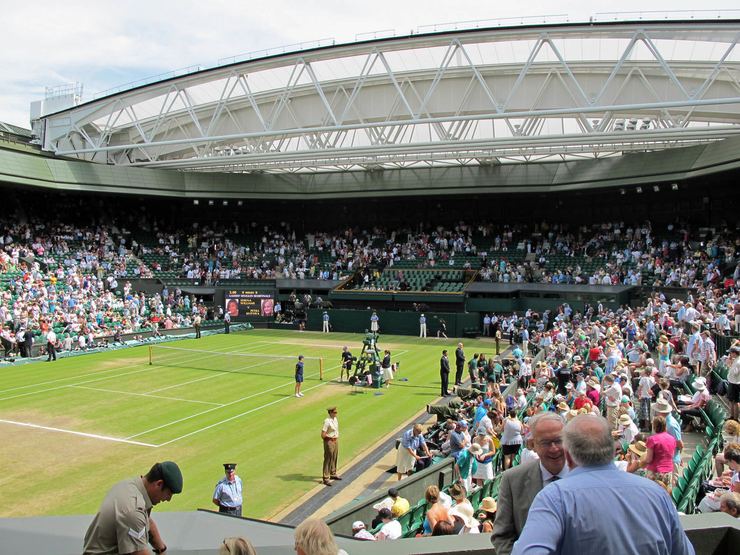
Wimbledon has 18 championship level courts in total, with this number set to rise over the coming years current expansion plans. This allows for a lot of tennis to be played over the fortnight.
The main courts are that of the iconic Centre Court and No. 1 Court, both of which hold over 10,000 spectators. What’s interesting is that the only tennis that these two courts see over the year is from the 2 weeks of Wimbledon. The committee decided that in order to have the best possible surfaces for the best players in the world, that this was deemed necessary.
Centre Court isn’t just the biggest court of the Championships, holding almost 15,000 people, but it’s one of the most recognisable sports arenas in the world. One of the reasons why the venue held so dear by so many people is the inclusion of the Royal Box. Whilst royalty don’t attend every single day of the two weeks, they are there for the main games later in the fortnight. But, there is always a plethora of celebrities and distinguished guests that peruse the seats, strictly on an invite-only basis.
Wimbledon Court Capacity – Top 4
| Court | Capacity | Year Opened | Retractable Roof |
|---|---|---|---|
| Centre Court | 15,000 | 1922 | Yes |
| No. 1 Court | 11,000 | 1997 | Yes |
| No. 2 Court | 4,000 | 2009 | No |
| No. 3 Court | 3,000 | 2011 | No |
Grass Surface
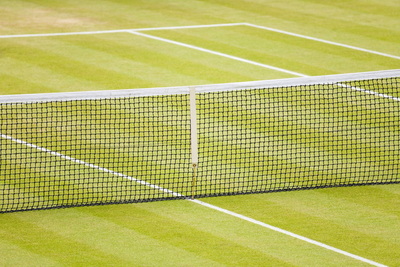
The fact that Wimbledon is played on grass is just one of a number of features that makes this event truly unique. It actually takes the ground staff 15 months to get the right playing surface in place, starting the process outside of the grounds and then moving it in. They use what is known as Perennial Ryegrass, which has been in place since 2001, adding more durability to the modern game. Fun fact, 9 tonnes of grass seed is used each year at Wimbledon alone!
Grass is a tricky surface for most people to get to grips with and requires a certain skill set to do well there. Often people mention that players who serve volley have had the best records and whilst this is mostly definitely true, the modern era has started to see a slight shift away from that, with the likes of Murray, Djokovic and Federer, all seeing sustain success and none massively known for their serve-volley work.
Grass is the fastest surface that players will play on. The ball tends to skid off the top more than the likes of clay or hard court, which means that often rallies are much shorter than the two aforementioned surfaces.
A lot of players actually struggle with the pace, but that’s more because there are so few grass tournaments on the main circuit these days. The reason behind that is simply down to cost of maintenance. Wimbledon can guarantee 40,000 through the doors every day of the Championships, which obviously allows them to make a lot of money and in turn create amazing playing surfaces. The reality is that smaller events might not have 40,000 people through the gates for the entirety of it, so cost becomes a massive issue.
Prize Money
As with all of these high-profile events, prizemoney plays a huge part. For 2023, the fund stood at £44.7 million. Due to fluctuations in the Pound, it’s tough to compare it exactly to the other majors, but they are all pretty similar these days.
This money is divided up between each tournament that is running throughout the Championships. The money is equal for both men’s and women’s games, with the winner of the singles title taking home a cheque worth a cool £2,350,000. In fact, a losing quarter finalist will grab a payday worth £340,000, such is the lucrative nature of the competition.
Wimbledon Singles Prize Money: 2019 – 2023
| Round | 2023 | 2022 | 2021 | 2019 |
|---|---|---|---|---|
| Winner | £2,350,000 | £2,000,000 | £1,700,000 | £2,350,000 |
| Runner-up | £1,175,000 | £1,050,000 | £900,000 | £1,175,000 |
| Semi-Finals | £600,000 | £535,000 | £465,000 | £588,000 |
| Quarter-finals | £340,000 | £310,000 | £300,000 | £294,000 |
| 4th Round | £207,000 | £190,000 | £181,000 | £176,000 |
| 3rd Round | £131,000 | £120,000 | £115,000 | £111,000 |
| 2nd Round | £85,000 | £78,000 | £75,000 | £72,000 |
| 1st Round | £55,000 | £50,000 | £48,000 | £45,000 |
One of the most interesting things about Wimbledon, but something that a lot of people aren’t aware of, is that they have the longest running sponsorship deal in the history of sport. The deal with Slazenger to provide the match balls has been in place since 1902. They’ve also been long time partners with that of Robinsons, who have been on the books since 1935 supplying fruit flavoured drinks.
Statistics
Since 2003 the Wimbledon men’s game has been dominated by four players: Rafael Nadal, Novak Djokovic, Andy Murray and Roger Federer. But, in those years, it was the now retired Federer who has been the king of Wimbledon, winning it no fewer that eight separate occasions, making him the most successful male player in the history of the Championships in the open era.
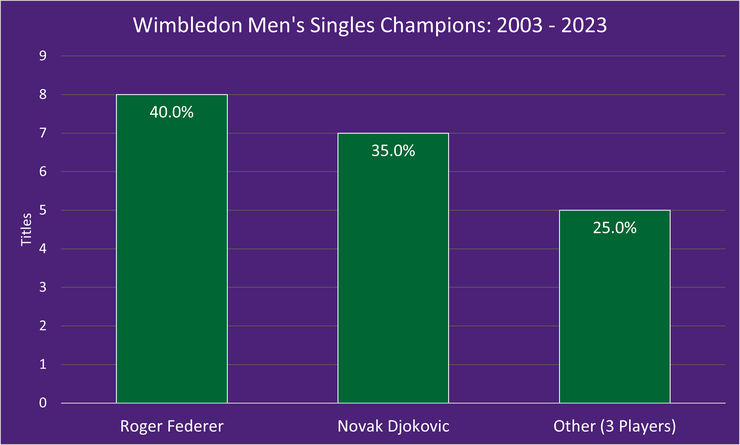
The women’s game has seen a similar level of dominance, with the Williams sisters winning twelve titles between them between 2000 and 2016. In this time Serena Williams won the tournament seven times with sister Venus victorious on five occasions. Since the turn of the century, apart from Serena and Venus Williams, only Petra Kvitova has won Wimbledon more than once. There have been nine other players who have won just once, the latest to do so was Marketa Vondrousova in 2023.
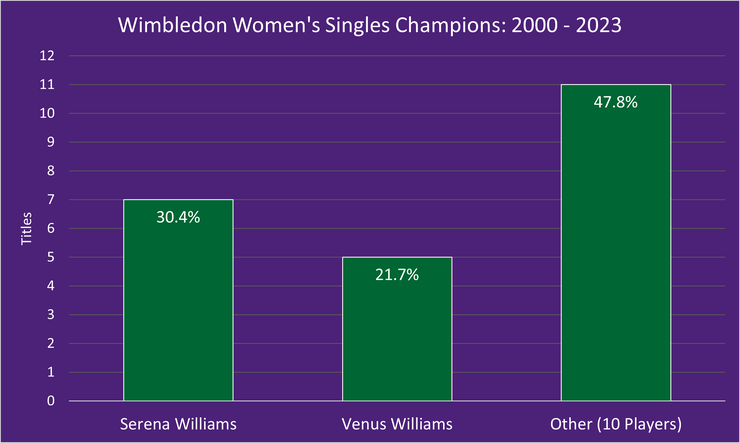
History
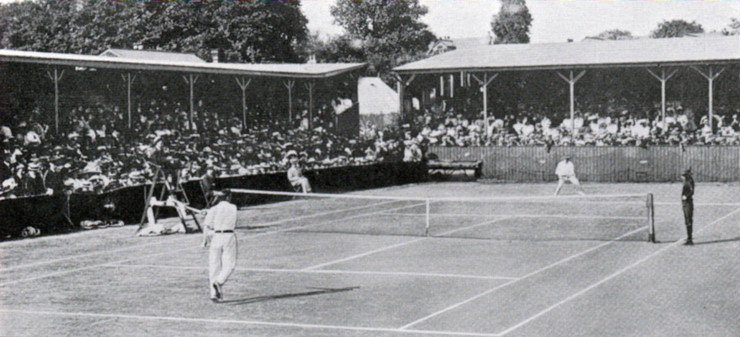
The All England Lawn Tennis and Croquet Club has been about since 1868 and set up primarily as private members club for the upper class of its day. Little did they know it would turn out to be one of the most influential associations within world tennis!
The club was situated in Wimbledon with that came the first Lawn Tennis Championship, essentially the same Championships that we know today. The inaugural event was held for gentleman only and was won by Spencer Gore, with over 200 people watching the final.
The club continued to flourish, deciding in 1922 that it needed to move to larger premises to accommodate for the increasing popularity. It found its home on Church Road in Wimbledon, exactly where it resides today, 100 years later.
Traditions
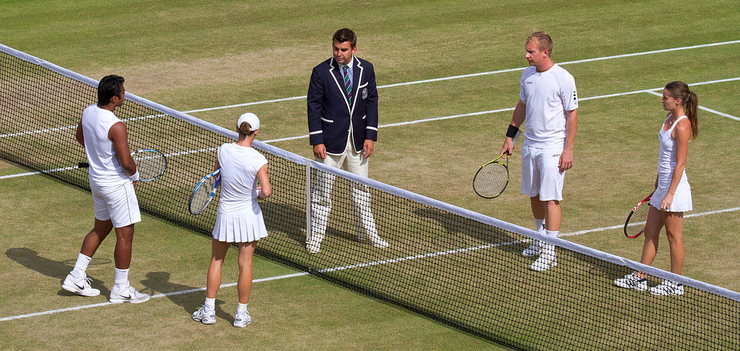
With the tournament comes a whole host of traditions, which makes Wimbledon unique. One of things that the players must adhere to is to wear all white when they are playing. This is a strict rule and whilst some leniency does come in for things like logos and very fine patterns, the bulk of the clothing must be white.
In contrast to that, the official colours if Wimbledon are actually purple and green, two colours that are heavily donned by the ball boys/girls and the umpires. Many of the members for the day in the Royal box are encouraged to wear similar colours as a homage to this. It’s also worth noting that men within the Royal box must wear a tie or they will be refused entry.
Finally, the word ‘Wimbledon’ rarely goes by without mentioning of the now famous strawberries and cream that is served up, often washed down with a glass of Pimms.
Most Successful Men
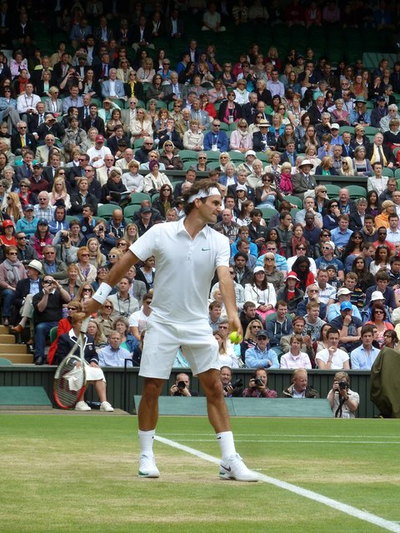
Throughout the open era of Wimbledon there have been many greats that have managed to get their hands on the trophy, including the likes of Bjorn Borg, Boris Becker, Andre Agassi and Rafael Nadal. But, there are three players that are able to stand head and shoulders above all of these greats; Pete Sampras, Roger Federer and Novak Djokovic.
Sampras was the first player to really dominate Wimbledon and whilst he found success at other majors, there was something about the grass surface that just seemed to suit his aggressive serve-volley style. We won Wimbledon on 7 different occasions, but what’s most impressive is that he did it just 8 years. Only Richard Kraijceck in 1996 stood in the middle of 7 successes.
It was probably quite fitting that the man to stop him winning an eighth title and five in a row at the time just so happened to be the man who surpassed his then record of seven titles, Roger Federer. It was Federer who beat Sampras in 2001, but later went on to lose to Tim Henman.
It was a quick learning curve for the Swiss legend, who picked up his first win in 2003. He then went on to win five times in a row, with some epic battles including that of the 2007 five-setter against Rafael Nadal, a player we would beat in two finals.
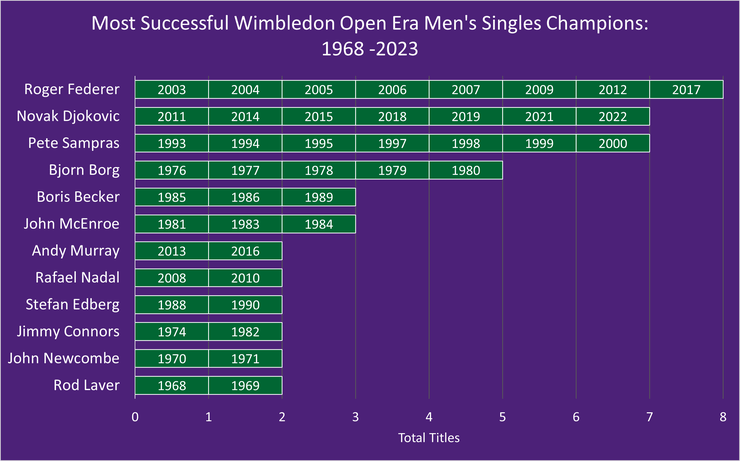
Taking up the mantle from Federer is Novak Djokovic. The Serbian player won seven titles between 2011 and 2022, and every Men’s Singles Championship between 2018 and 2022. Can Djokovic add to his titles and become the most successful player of all time?
Most Successful Women
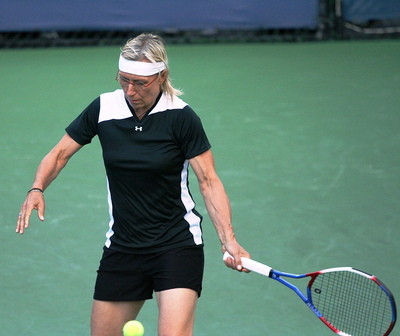
The greatest of them all in the women’s game at Wimbledon is that of Martina Navratilova. The American won a record 9 titles, from 1978 though to 1990. She dominated for huge parts of the eighties, winning 6 consecutive times from 1982 to 1987.
Closely following Navratilova is that of German Steffi Graff and fellow American, Serena Williams. With all three women, there was a feeling of the changing of the guard. Graff’s dominance game in late eighties and actually beat Navratilova in two consecutive finals. She then went on to win her 7th and final title in 1996.
Serena took over in the early ‘naughties’ with her first title coming in 2002, beating her sister over the space of 5 years when the Williams’ sisters really dominated the world of tennis. Serena has continued as one of the greatest of all time though it seems unlikely now that she will catch Navratilova’s record in the modern game.
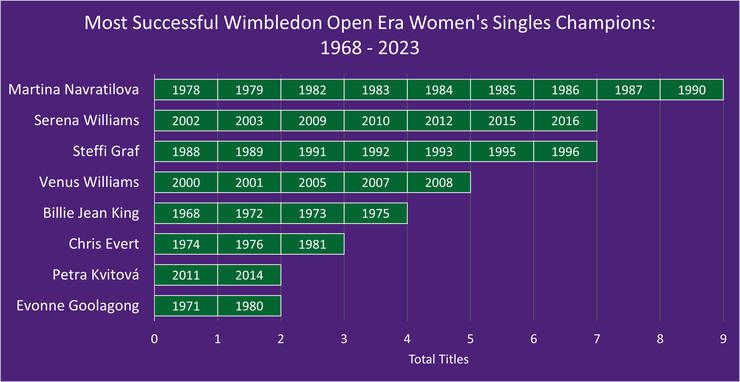
Brits at Wimbledon
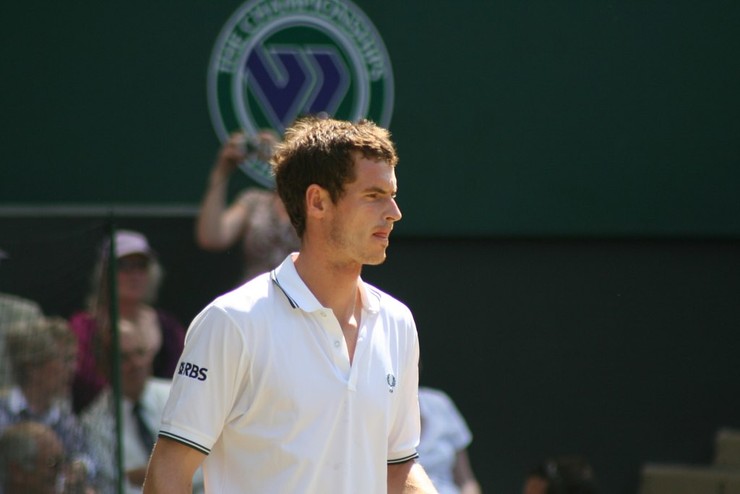
Whilst British tennis hasn’t always been the strongest, they have been able to produce a couple of greats. From the women’s game this player is Virginia Wade. Her one and only Wimbledon victory came in 1977, but she is still dubbed as the most successful female British tennis player of all time, with three Grand Slam victories to her name from the early-mid 1970’s.
A generation or two earlier and it was up to Fred Perry to fly the flag in the men’s game. Perry won Wimbledon on three occasions, with a total of eight majors. But, Perry was also the first player to win the career Grand Slam, which is made up winning all four of the majors. To date, only a handful of players have ever repeated this feat.
In the modern day, the Brits have relied on the success of Andy Murray to keep them going. Murray was the first and only male winner since Fred Perry and has been able to complete two Wimbledon wins in 2013 and 2016. He will also always be remembered for the final loss to Roger Federer in 2012 where he broke down in tears in the interview after. But, Murray was to have the last laugh as he not only won Olympic Gold later that summer beating Federer on the same Wimbledon Centre Court, but also going on to finally lift the men’s crown just 12 months later, beating Novak Djokovic in straight sets.